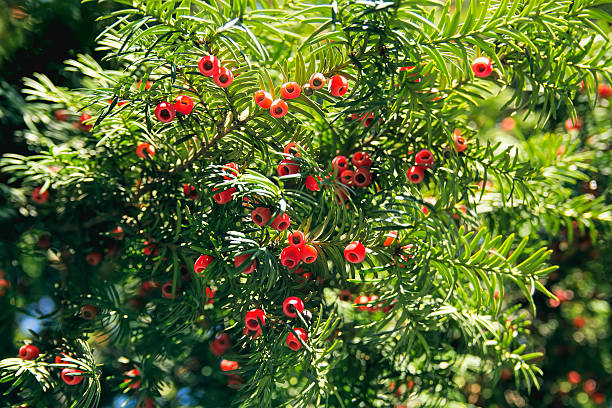This lovely evergreen shrub is a joy to behold all year round. So, why not get planting now and enjoy its beauty.

On the lookout for a shrub that’ll brighten up your garden all year round? The evergreen common yew is a great choice. It’ll impress you with its dark green, glossy needles and brightly coloured fruit. You can use it as a hedge or garden sculpture. The best time to plant it is in the autumn.
The common yew is a very hardy plant.
The common yew is a popular evergreen shrub that’s easy to grow and great for a variety of garden compositions. The bark is a dark grey colour, the needles are dark green, non-spiny and toothed on the stems. The berries are red in colour. They’re a great source of food for birds. Here’s the lowdown on planting and growing this plant.
Could you tell me when and where I should plant the common yew?
The common yew is planted in spring or autumn. It’s a great time of year for planting because the weather is mild and the soil is moist. The idea is that you plant the bush in autumn, so it has time to root before the frost. So it’s best to do it in September or October.
The common yew is a great choice for semi-shady and shady spots, as well as dense hedge plantings or as moulded plants. These shrubs have a dense root system, so you can choose to grow them in containers for a long time if you want to. In winter, they make a lovely decoration for the garden.
What are the best ways to care for the common yew? The key things to keep in mind when looking after your yew.
Read the most important info about planting and growing the common yew.
- Make sure you give the common yew a moist, humus-rich and well-drained substrate. It seems to do well in slightly alkaline soil, so it’s probably worth liming it before planting.
- Once you’ve planted these bushes, make sure you water them regularly, especially during dry periods. Make sure you water them well, until you get a 30 cm layer of moist soil.
- You can fertilise the common yew from March to June, every 3-4 weeks or so, with a combined fertiliser. This is particularly important after pruning, as the plant needs to recover.
- It’s best to avoid using nitrogen fertilisers from the end of July, as they can encourage the growth of shoots until autumn, which could potentially lead to the freezing of young, unwooded stems.
- The shearing is done in March or April. We can then do it a second time in July or August. We just remove the withered and old shoots near the trunk, and cut the rest in half. It’s also a good idea to remove any weeds, as they can take water from the yew and cause the needles to die off.

